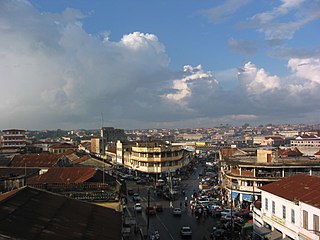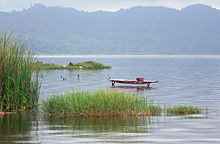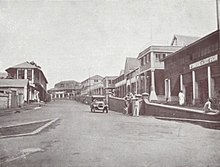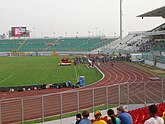Osei Kofi Tutu I was one of the founders of the Ashanti Empire, assisted by Okomfo Anokye, his chief priest and a distance relative from the town of Awukugua - Akuapem. The Asante comes from the Akan ethnic group of West Africa. Osei Tutu I led an alliance of Asante states against the regional hegemony, the Denkyira, completely defeating them. He ruled the Kwaman State between c.1680/c.1695-1701 and he ruled the Ashanti Empire from late 1701-c.1717.

Osei Tutu II is the 16th Asantehene, enstooled on 26 April 1999. By name, Otumfuo Osei Tutu II is in direct succession to the 17th-century founder of the Ashanti Empire, Otumfuo Osei Tutu I. He is also the Chancellor of the Kwame Nkrumah University of Science and Technology. Otumfuo Osei Tutu II is the Grand Patron of the Grand Lodge of Ghana and the Sword Bearer of the United Grand Lodge of England.
Okomfo Anokye (c.1655-c.1717?/c.1719) was the first priest (Okomfo) of the Ashanti Empire. Anokye is known for his participation in the expansion of the empire. He was also the codifier of the constitution and laws of the Ashanti Empire.

The Ashanti Region is located in the southern part of Ghana and is the third largest of 16 administrative regions, occupying a total land surface of 24,389 km2 (9,417 sq mi) and making up 10.2 percent of the total land area of Ghana. It is the most populated region in Ghana, with a population of 5,440,463 according to the 2021 census, accounting for around one-fifth of Ghana's total population. The Ashanti Region is known for its gold bar and cocoa production. The largest city and capital of Ashanti is Kumasi.
Opoku Ware I was the 2nd Asantehene of Oyoko heritage, who ruled the Ashanti Empire. Between 1718 and 1722, Opoku Ware became Asantehene during a period of civil disorder after the death of the 1st Asanthene. From 1720 to 1721, Opoku established his power.

Asante Kotoko Sporting Club, simply known as Asante Kotoko, is a professional football club founded on 31 August 1935 and based in Kumasi in the Ashanti Region of Ghana. Nicknamed the Porcupine Warriors, they compete in the Ghana Premier League and play their home matches at the Baba Yara Stadium in Amakom, Kumasi.

Kumasi Metropolitan Assembly is one of the 261 Metropolitan, Municipal and District Assemblies (MMDAs) in Ghana. It forms part of the forty-three districts in Ashanti Region, Ghana with Kumasi being its administrative capital. The metropolis is located in the central part of Ashanti Region and has Kumasi as its capital city.With a projected population of over two million and an annual growth rate of about 5.4%, it is a rapidly expanding metropolis. The Metropolis is about 254 kilometers long, with a centrally located commercial area and a largely circular physical structure.The fast rate of urbanization is confirmed by estimates that 48%, 46%, and 60% of the Metropolis are rural, peri-urban, and urban, respectively.

The Golden Stool is the royal and divine throne of kings of the Ashanti people and the ultimate symbol of power in Asante. According to legend, Okomfo Anokye, High Priest and one of the two chief founders of the Asante Confederacy, caused the stool to descend from the sky and land on the lap of the first Asante king, Osei Tutu. Such seats were traditionally symbolic of a chieftain's leadership, but the Golden Stool is believed to house the spirit of the Asante nation—living, dead and yet to be born.
Articles related to Ghana include:

The Asante Empire, today commonly called the Ashanti Empire, was an Akan state that lasted from 1701 to 1901, in what is now modern-day Ghana. It expanded from the Ashanti Region to include most of Ghana and also parts of Ivory Coast and Togo. Due to the empire's military prowess, wealth, architecture, sophisticated hierarchy and culture, the Ashanti Empire has been extensively studied and has more historic records written by European, primarily British, authors than any other indigenous culture of sub-Saharan Africa.

Otumfuo Opoku Ware II was the 15th Asantehene. He succeeded his uncle Osei Tutu Agyeman Prempeh II on 27 July 1970. He ruled for 29 years until his death in February 1999. He was succeeded by Otumfuo Nana Osei Tutu II.

The Asante, also known as Ashanti, are part of the Akan ethnic group and are native to the Ashanti Region of modern-day Ghana. Asantes are the last group to emerge out of the various Akan civilisations. Twi is spoken by over nine million Asante people as a first or second language.
Osei Kyeretwie Senior High School is a coed boarding school in Kumasi, Ashanti Region, Ghana.

An Akrafena is an Ashanti sword, originally meant for warfare but also forming part of Ashanti heraldry. The foremost example of an akrafena is the Mponponsuo, which belonged to Opoku Ware II. It has survived to the present day because it is still occasionally used in ceremonies, such as the Akwasidae Festival.
Asanteman Senior High School is a co-educational second-cycle institution in Kumasi in the Ashanti Region of Ghana.

The history of Kumasi dates to the late 17th century when it emerged as the capital of the Ashanti Empire. Although various oral sources differ on the origin of Kumasi, majority agree it emerged as the capital of Ashanti under Osei Kofi Tutu I in the late 17th century. In the early 18th century, Kumasi was invaded and sacked by the Aowin but the invasion was curbed by Asantehene Opoku Ware I. 19th century written accounts by European visitors described the neatness and sophistication of the city. The population of Kumasi under the Ashanti Empire varies per source. The city was ransacked by the British Empire in 1874 during the Anglo-Ashanti Wars. A Civil war occurred within the 1880s which led to further decline of Kumasi. Another British invasion of the city occurred within 1895—1896 as Kumasi was left in ruins.

The Ramseyer Memorial Presbyterian Church, originally named the Basel Mission Church, Kumasi and later the Ebenezer Presbyterian Church, is a historic Protestant church located in the suburb of Adum in Kumasi, the capital of the Ashanti Region of Ghana. The church is affiliated to the Presbyterian Church of Ghana. It was founded in 1896 by Fritz Ramseyer, a Swiss-born Basel missionary who was captured by the Asante in 1869. The stone church house was built by the early Basel missionaries led by the technical staff member and building technologist, Fritz Ramseyer as well as the missionary-architect, Karl Epting in 1907. Liturgy is conducted in English and the Asante Twi language.

Friedrich Augustus Louis Ramseyer also Fritz Ramseyer was a Swiss-born Basel missionary, who was captured by the Asante in 1869 in colonial Ghana, together with his wife Rosa Louise Ramseyer, Basel mission technical staff, Johannes Kühne and French trader, Marie-Joseph Bonnat. Ramseyer was later released in 1874 and pioneered the Christian mission in Kumasi and the rest of Asante. Additionally, he spearheaded the planting of churches in Abetifi. Apart from his evangelism, Ramseyer was instrumental in the expansion of opportunities in the fields of education, artisan industry training, land acquisition for building design and manpower development in the areas he lived and worked in.
The political organization of the historical Ashanti Empire was characterized by stools which denoted "offices" that were associated with a particular authority. The Golden Stool was the most powerful of all, because it was the office of the King of the Ashanti Empire. Scholars such as Jan Vansina have described the governance of the Ashanti Empire as a federation where state affairs were regulated by a council of elders headed by the king, who was simply primus inter pares.

Konadu Yaadom, also Kwadu Yaadom was the fourth Asantehemaa of the Ashanti Empire, whose multiple marriages and spiritual influence meant that she became an important and powerful ruler in the eighteenth and early nineteenth centuries.


































